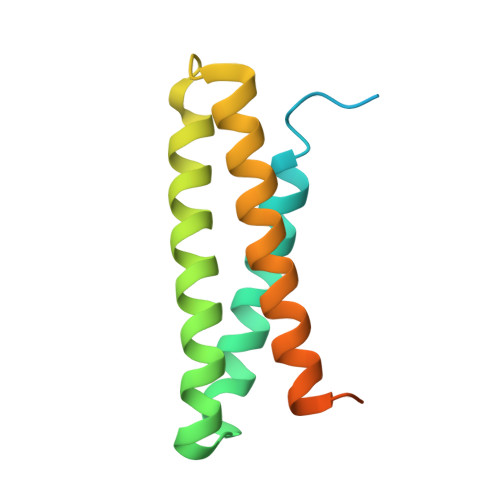Structural insight into the role of Streptococcus parasanguinis Fap1 within oral biofilm formation.
Garnett, J.A., Simpson, P.J., Taylor, J., Benjamin, S.V., Tagliaferri, C., Cota, E., Chen, Y.Y., Wu, H., Matthews, S.(2012) Biochem Biophys Res Commun 417: 421-426
- PubMed: 22166217
- DOI: https://doi.org/10.1016/j.bbrc.2011.11.131
- Primary Citation of Related Structures:
3RGU - PubMed Abstract:
The fimbriae-associated protein 1 (Fap1) is a major adhesin of Streptococcus parasanguinis, a primary colonizer of the oral cavity that plays an important role in the formation of dental plaque. Fap1 is an extracellular adhesive surface fibre belonging to the serine-rich repeat protein (SRRP) family, which plays a central role in the pathogenesis of streptococci and staphylococci. The N-terminal adhesive region of Fap1 (Fap1-NR) is composed of two domains (Fap1-NR(α) and Fap1-NR(β)) and is projected away from the bacterial surface via the extensive serine-rich repeat region, for adhesion to the salivary pellicle. The adhesive properties of Fap1 are modulated through a pH switch in which a reduction in pH results in a rearrangement between the Fap1-NR(α) and Fap1-NR(β) domains, which assists in the survival of S. parasanguinis in acidic environments. We have solved the structure of Fap1-NR(α) at pH 5.0 at 3.0Ǻ resolution and reveal how subtle rearrangements of the 3-helix bundle combined with a change in electrostatic potential mediates 'opening' and activation of the adhesive region. Further, we show that pH-dependent changes are critical for biofilm formation and present an atomic model for the inter-Fap1-NR interactions which have been assigned an important role in the biofilm formation.
Organizational Affiliation:
Department of Biological Sciences, Centre for Structural Biology, Imperial College London, London, UK.















